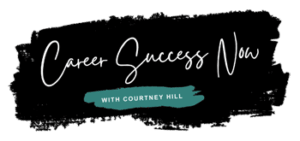How To Explain Resume Gaps

Crafting a resume generally is a daunting process, particularly for individuals who have gaps of their work historical past. It’s pure to really feel anxious about how potential employers may understand these breaks. The excellent news is {that a} resume hole doesn’t need to be a dealbreaker. In truth, it may be a chance to focus on […]
3 Ways You Can Land Higher Paying Role in The Next 30 Days:

1. Position yourself as a “specialist” I’m sure you’ve heard this before, but I’ll say it again. No one likes generalists… Someone who markets their self as a “I can help you do anything”, and “I have lots of different skillsets you could benefit from”, ultimately attracts no one. People want to know you have […]
The Biggest Career Search Success Factor

Know what my single biggest piece of advice to achieving career hunting success is? It’s a complex, yet VERY simple concept. Ready? It is: BECOME OBSESSED. Yes, become obsessed. It’s that simple. If you want to accomplish something, get great at something, or attain something, you need to become obsessed […]
Mastering the Interview Process

Pre-Interview Preparation Stage As you continue to navigate your way through the career search process, you may find yourself in the fortunate position of hearing back from contacted companies. How exciting! If a interview is eventually scheduled, what are the first steps you should take? The work on your end does not stop here. […]
Tips and Tricks to Landing Your Dream Job

Look, we’ve all been there. Scrolling through #indeed, or #linkedin or #monster and seeing a job posting that catches your eye. You read all the posting details, research the company, and think to yourself, “that’s exactly what I want to do, I’m going to apply“. You dig through your computer, open the resume you’ve been […]
